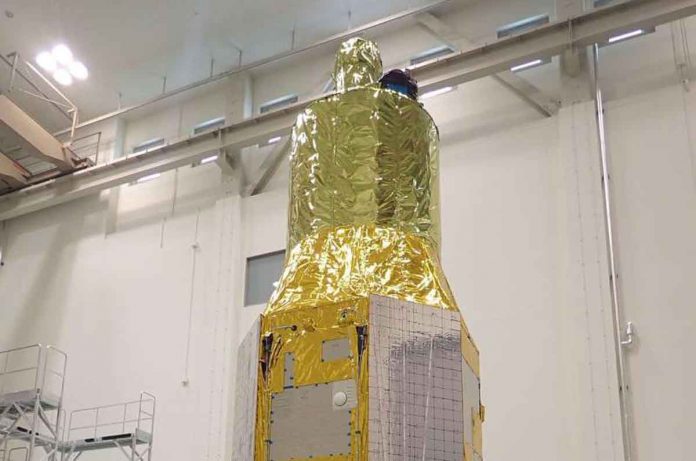The X-ray Imaging and Spectroscopy Mission, which will greatly expand our understanding of the high-energy universe, recently passed two critical milestones on its way to observing the cosmos.
The mission, dubbed XRISM (pronounced “crism”), is a collaboration between the Japan Aerospace Exploration Agency (JAXA) and NASA, with participation from the European Space Agency (ESA), to investigate the X-ray universe through high-resolution imaging and spectroscopy.
“In May, the spacecraft components—including its two instruments, Resolve and Xtend—were mechanically and electrically integrated onto the observatory for the first time,” said Lillian Reichenthal, Project Manager at NASA’s Goddard Space Flight Center in Greenbelt, Maryland. “This was a significant milestone in JAXA’s spacecraft development.”
When all of the systems are installed, a new round of spacecraft testing begins to ensure that everything works properly. Engineers integrate and test the equipment in stages, beginning with individual components, moving on to assembled systems and instruments, and finally the entire observatory. These tests expose the spacecraft and instruments to the conditions that will be encountered during launch and space operations.
Another significant achievement was the completion of testing and calibration of two identical Goddard-built X-ray Mirror Assemblies (XMAs), which were shipped to Japan in late May and early June. The XMAs were subjected to separate environmental testing and will undergo final optical alignment before being installed on each instrument in the fall.
The Resolve instrument will precisely measure low-energy X-rays to learn about the physical state and motion of ionised gases associated with supernova remnants, galaxy clusters, and supermassive black hole outflows in active galaxies.
The Xtend instrument, which detects X-rays of comparable energy, will produce images with a field of view 150 times larger than Resolve, extending XRISM’s cosmic reach.
“The science from XRISM will be extraordinary,” said Goddard’s Brian Williams, the mission’s NASA project scientist. “The Resolve instrument has the potential to open a new window into the high-energy universe.” The detector system for Resolve was also created at Goddard.
XRISM is scheduled to launch in 2023 from Japan’s Tanegashima Space Center on a JAXA HII-A rocket.

